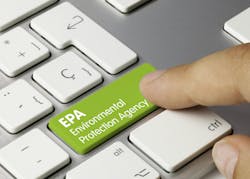Final EPA Rule on Ethylene Oxide Emissions Standards for Sterilization Facilities
On March 14, the U.S. Environmental Protection Agency (EPA) announced a rule that will reduce lifetime cancer risks for people living near commercial sterilization facilities across the U.S. The final amendments to the air toxics standards for ethylene oxide commercial sterilization facilities put in place the strongest measures in the nation’s history to reduce emissions of EtO—one of the most potent cancer-causing chemicals. Through the installation of air pollution controls, commercial sterilizers will reduce emissions by more than 90%.
A press release on the announcement says that “This final rule advances President Biden’s commitment to ending cancer as we know it as part of the Cancer Moonshot, while also advancing the Biden-Harris Administration’s commitment to environmental justice by protecting communities that are most exposed to toxic chemicals. EtO can be particularly harmful to children and communities that are already overburdened by pollution.”
Further, “In finalizing this rule, EPA considered the latest data and science, while taking into account the importance of a safe and reliable supply of medical sterilization devices for patients and hospitals. EPA worked closely with partners across the Biden-Harris Administration, including at the Department of Health and Human Services, to develop a final rule that centers on public health. This final rule provides sufficient time and flexibility for facilities to come into compliance, simultaneously affording strong public health protection for nearby communities while minimizing any potential impacts to the medical device supply chain.”
The final rule, according to the press release, addresses emissions at approximately 90 commercial sterilization facilities owned by almost 50 companies. The EPA is finalizing amendments to the National Emission Standards for Hazardous Air Pollutants including:
- Establishing standards for currently unregulated emissions
- Strengthening standards that are on the books for sources like sterilization chamber vents and aeration room vents
- Requiring continuous emissions monitoring and quarterly reporting for the majority of commercial sterilizers
- Ensuring sterilizers are subject to emission standards during periods of startup, shutdown, and malfunction
- Other clarifying items including electronic reporting and technical revisions
“The Biden-Harris Administration believes securing our supply of medical devices is essential,” the press release adds. “To prevent unintended consequences and ensure orderly implementation, the Clean Air Act has long provided backstop authority allowing the President to provide a two-year compliance exemption to assist a facility with achieving compliance with National Emission Standards for Hazardous Air Pollutants in carefully delimited special circumstances — if the technology to implement the standard is not available and it is in the national security interest to provide additional time to comply. EPA has confirmed that the President is prepared to exercise this authority, if necessary to protect the medical supply chain and a commercial sterilizer is working in good faith to come into compliance with the rule.”
Additionally, the EPA is also working to bolster standards to reduce EtO and other toxic pollutants from chemical plants. Other actions to address EtO emissions and advance EtO research include:
- Investigating additional sources of EtO (e.g., stand-alone warehouses) and opportunities for emissions controls
- Enforcing existing regulations as appropriate
- Conducting research to better understand and measure EtO
Following this news, Premier Inc.’s senior vice president of Government Affairs, Soumi Saha issued the following statement:
“Premier is equally dedicated to weighing environmental responsibilities with our ability to sustain patient care across the country and is encouraged that the Environmental Protection Agency (EPA) has modified its proposal in the final ethylene oxide sterilization rule to better strike this balance. By adjusting the compliance timeline and permitting the staggering of facilities based upon size as called for by Premier, EPA has acknowledged the need to protect and enhance environmental stewardship in the communities we serve while preventing medical device shortages and downstream impact to patient care.
“Moving forward, Premier urges sterilizers and manufacturers of sterile devices to proactively and voluntarily share information with the Food and Drug Administration (FDA) regarding anticipated supply disruptions during improvements to their facilities so the healthcare supply chain can better prepare for any potential shortages and impact to patient care.
“Given the intense supply chain pressures our nation has faced during the pandemic, enabling true domestic resiliency requires us to think cohesively about how national standards and regulations support that goal. Premier is pleased that EPA recognized this need.”
EPA has the press release.
Premier has the statement.

